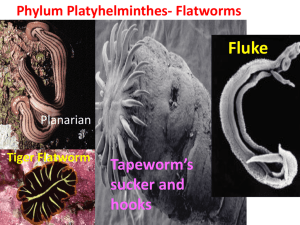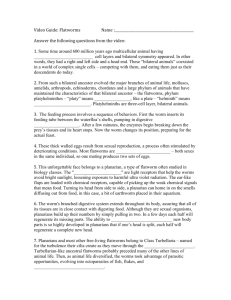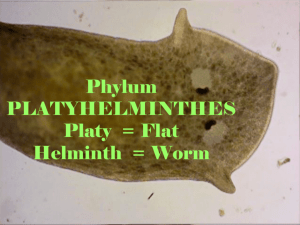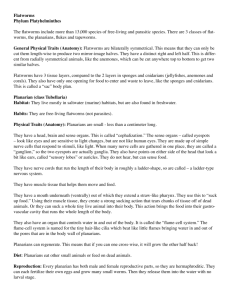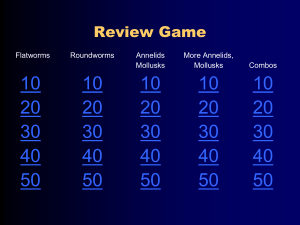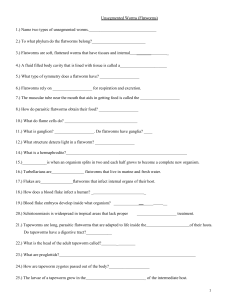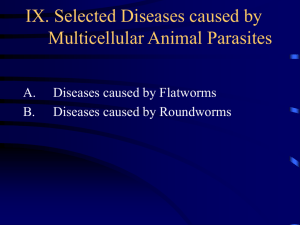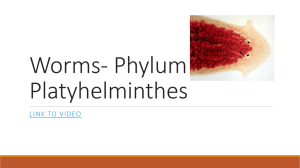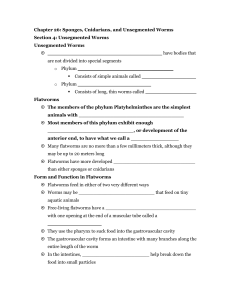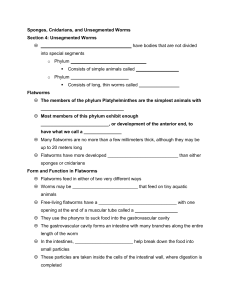ZOO 1010 Study Guide Chapter 8
advertisement
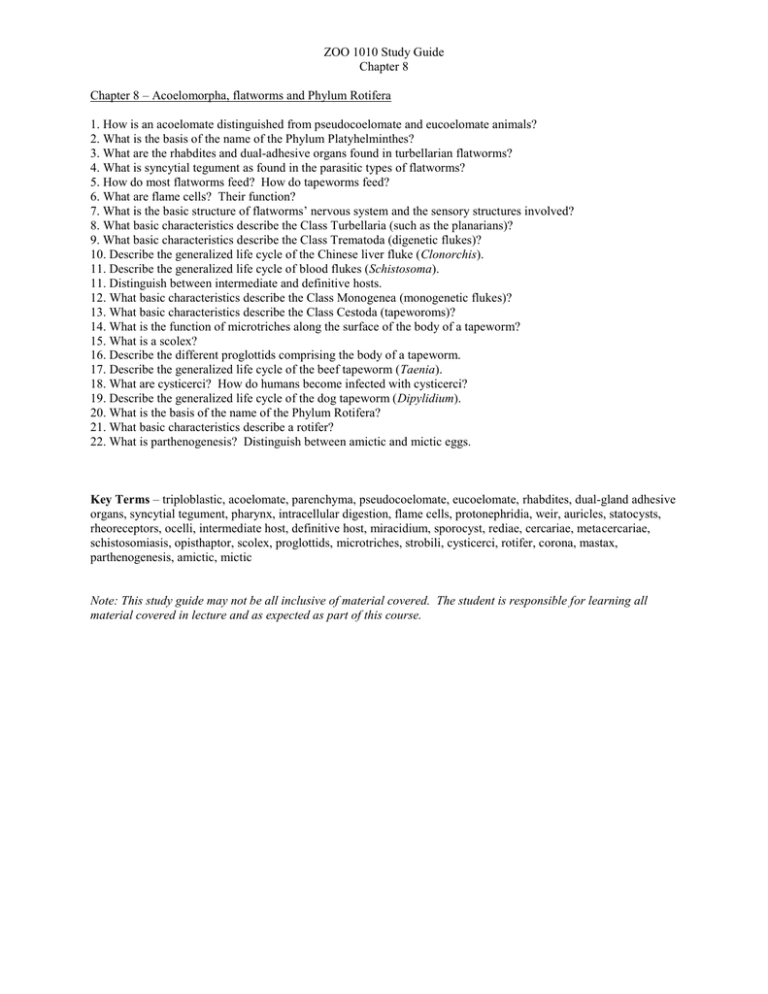
ZOO 1010 Study Guide Chapter 8 Chapter 8 – Acoelomorpha, flatworms and Phylum Rotifera 1. How is an acoelomate distinguished from pseudocoelomate and eucoelomate animals? 2. What is the basis of the name of the Phylum Platyhelminthes? 3. What are the rhabdites and dual-adhesive organs found in turbellarian flatworms? 4. What is syncytial tegument as found in the parasitic types of flatworms? 5. How do most flatworms feed? How do tapeworms feed? 6. What are flame cells? Their function? 7. What is the basic structure of flatworms’ nervous system and the sensory structures involved? 8. What basic characteristics describe the Class Turbellaria (such as the planarians)? 9. What basic characteristics describe the Class Trematoda (digenetic flukes)? 10. Describe the generalized life cycle of the Chinese liver fluke (Clonorchis). 11. Describe the generalized life cycle of blood flukes (Schistosoma). 11. Distinguish between intermediate and definitive hosts. 12. What basic characteristics describe the Class Monogenea (monogenetic flukes)? 13. What basic characteristics describe the Class Cestoda (tapeworoms)? 14. What is the function of microtriches along the surface of the body of a tapeworm? 15. What is a scolex? 16. Describe the different proglottids comprising the body of a tapeworm. 17. Describe the generalized life cycle of the beef tapeworm (Taenia). 18. What are cysticerci? How do humans become infected with cysticerci? 19. Describe the generalized life cycle of the dog tapeworm (Dipylidium). 20. What is the basis of the name of the Phylum Rotifera? 21. What basic characteristics describe a rotifer? 22. What is parthenogenesis? Distinguish between amictic and mictic eggs. Key Terms – triploblastic, acoelomate, parenchyma, pseudocoelomate, eucoelomate, rhabdites, dual-gland adhesive organs, syncytial tegument, pharynx, intracellular digestion, flame cells, protonephridia, weir, auricles, statocysts, rheoreceptors, ocelli, intermediate host, definitive host, miracidium, sporocyst, rediae, cercariae, metacercariae, schistosomiasis, opisthaptor, scolex, proglottids, microtriches, strobili, cysticerci, rotifer, corona, mastax, parthenogenesis, amictic, mictic Note: This study guide may not be all inclusive of material covered. The student is responsible for learning all material covered in lecture and as expected as part of this course.
